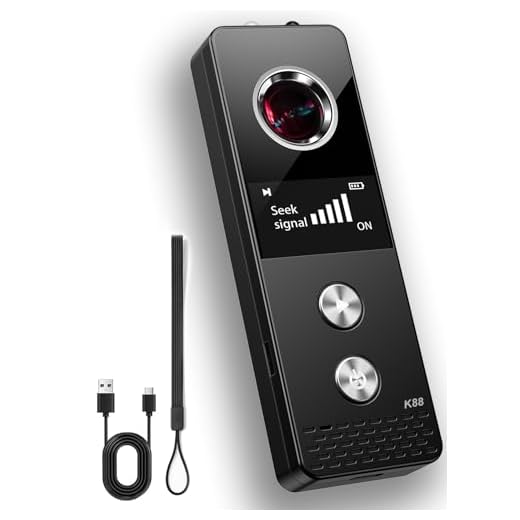


Security cameras are meant to protect and monitor various locations, but sometimes, due to misconfigurations or vulnerabilities, they can be accessed by unauthorized individuals.
Accessing open security cameras can raise ethical concerns and legal issues, so it’s important to proceed with caution and respect privacy rights.
However, understanding how these cameras can be accessed can also help in identifying and addressing security flaws to prevent potential breaches.
Discovering Open Security Cameras
Security cameras are an important tool for monitoring and protecting properties. However, some security cameras may be left open and accessible to the public, posing a potential privacy risk. Here are some ways to discover open security cameras:
Search Engines: Use search engines like Google to search for specific keywords related to security cameras. You can use search queries like “inurl:viewerframe?mode= refresh” to find open security camera feeds.
Public Camera Directories: There are websites that list open security cameras from around the world. You can explore these directories to discover live feeds from different locations.
Shodan: Shodan is a search engine for internet-connected devices. You can use Shodan to search for open security cameras by filtering the results based on specific criteria.
Online Forums and Communities: Join online forums and communities dedicated to security camera enthusiasts. These platforms often share tips and tricks for finding open security cameras.
By using these methods, you can discover open security cameras and understand the importance of securing your own camera feeds to protect your privacy.
Understanding the Basics
Open security cameras refer to cameras that are accessible online without any authentication or password protection. These cameras are often connected to the internet for remote monitoring and can be accessed by anyone with the correct URL or IP address.
It is important to note that accessing open security cameras without permission is illegal and unethical. Always ensure you have proper authorization before viewing any security camera feeds.
Understanding the basics of how open security cameras work and the potential risks associated with accessing them can help you make informed decisions about your online security practices.
Identifying Access Points
Before attempting to access open security cameras, it is important to identify potential access points. Access points are the locations where security cameras are connected to the internet or network, allowing them to be accessed remotely. Some common access points include:
| 1. IP addresses: Each security camera is assigned an IP address, which can be used to access the camera’s live feed or settings. |
| 2. Port numbers: Security cameras often use specific port numbers for communication. By identifying the port numbers used by the cameras, you can connect to them. |
| 3. Web interfaces: Many security cameras have web interfaces that can be accessed through a web browser. These interfaces allow you to view live feeds, adjust settings, and more. |
| 4. Default credentials: Some security cameras come with default username and password combinations. If these credentials have not been changed, they can be used to access the cameras. |
By identifying these access points, you can determine the best way to access open security cameras while following ethical guidelines and legal considerations.
Security Risks and Concerns
While accessing open security cameras may seem harmless or even intriguing, it is important to be aware of the potential security risks and concerns associated with this activity.
Privacy Concerns: Viewing footage from open security cameras can infringe on the privacy of individuals who are unaware that they are being monitored. This can lead to ethical and legal issues.
Hacking Risks: Open security cameras may be vulnerable to hacking, allowing malicious actors to access the footage and use it for nefarious purposes. This can result in breaches of sensitive information and compromise the security of the camera owners.
Legal Implications
Accessing open security cameras without proper authorization can have serious legal consequences. In many jurisdictions, unauthorized access to surveillance cameras is considered a violation of privacy laws and can result in criminal charges. It is important to always obtain proper authorization before accessing any security camera feeds, even if they are publicly accessible.
Furthermore, recording or sharing footage from security cameras without consent is also illegal and can lead to legal action. It is crucial to understand the legal implications of accessing open security cameras and to always respect the privacy rights of others.
Protecting Your Privacy
When accessing open security cameras, it’s important to be mindful of your privacy and the privacy of others. Here are some tips to help protect your privacy:
1. Use a VPN:
Consider using a Virtual Private Network (VPN) to encrypt your internet connection and mask your IP address. This can help prevent others from tracking your online activities.
2. Avoid sharing personal information:
Avoid sharing any personal information while accessing open security cameras. Be cautious about what you say or do while viewing these cameras to protect your identity and privacy.
Reporting Vulnerabilities
If you discover any vulnerabilities or security issues while accessing open security cameras, it is important to report them responsibly. Contact the owner or administrator of the camera system directly if possible, providing detailed information about the vulnerability and how it can be exploited. It is crucial to follow responsible disclosure practices to ensure that the issue is addressed promptly and the security of the system is maintained.
Alternatively, you can report the vulnerability to the appropriate authorities or organizations, such as the Internet Crime Complaint Center (IC3) or the Computer Emergency Response Team (CERT). By reporting vulnerabilities, you contribute to the overall security of the internet and help protect individuals and organizations from potential cyber threats.






